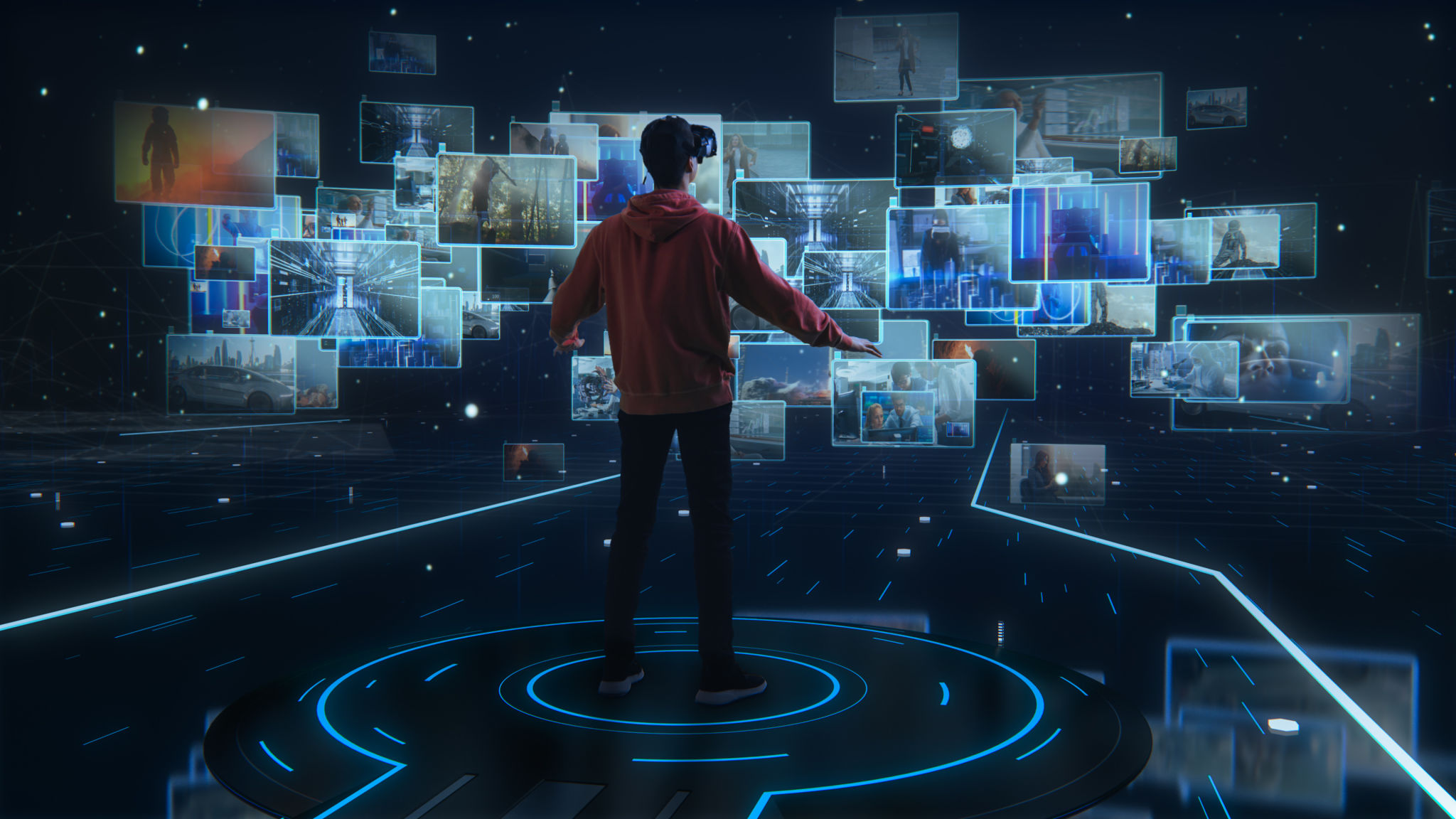Top Media Production Trends Shaping the Industry Today
Th
The Rise of Virtual and Augmented Reality
In recent years, virtual reality (VR) and augmented reality (AR) have moved from niche technologies to mainstream media production tools. These technologies are revolutionizing the way content is created and consumed. By providing immersive experiences, VR and AR are enhancing storytelling, allowing audiences to engage with content in unprecedented ways.
VR is particularly popular in gaming and training simulations, while AR is making waves in marketing and live events. The integration of these technologies into media production is creating new opportunities for brands to connect with their audiences, offering interactive experiences that were previously impossible.

Embrace of Artificial Intelligence
Artificial intelligence (AI) is transforming media production by automating tasks and enabling more personalized content delivery. AI-driven tools are being used to streamline video editing, enhance visual effects, and even generate scripts. This technology allows creators to focus more on the creative process while leaving repetitive tasks to machines.
Beyond production, AI is also being leveraged in distribution. Algorithms are used to analyze viewer preferences and recommend content, ensuring that the right audience finds the right material. This personalized approach increases engagement and viewer satisfaction.

Live Streaming: A New Norm
Live streaming has become a staple in media production, offering real-time interaction with audiences. Platforms like YouTube Live, Twitch, and Facebook Live have made it easier than ever for content creators to broadcast events as they happen. This trend is not limited to traditional media; businesses and influencers are also using live streaming to reach their audiences directly.
The appeal of live streaming lies in its authenticity. Audiences crave genuine interactions, and live content provides an unfiltered view into events and personalities. As internet speeds improve and platforms become more accessible, live streaming will continue to grow as a vital component of media production.

Sustainability in Production
With increasing awareness of environmental issues, sustainability has become a significant trend in media production. Companies are seeking ways to reduce their carbon footprint by using energy-efficient equipment and opting for digital distribution over physical media. The industry is also exploring eco-friendly practices in set design and waste management.
This trend not only benefits the environment but also resonates with consumers who value corporate responsibility. By adopting sustainable practices, media producers can appeal to a growing demographic of eco-conscious viewers.
The Power of User-Generated Content
User-generated content (UGC) is reshaping the media landscape by empowering audiences to become creators. Social media platforms have made it easy for users to share their own videos, photos, and stories, leading to a diverse array of content that reflects authentic experiences.
Brands are tapping into this trend by encouraging UGC through campaigns and challenges. This approach not only fosters community engagement but also provides brands with a wealth of organic content that can enhance their marketing efforts.

The Shift Towards Remote Production
The COVID-19 pandemic accelerated the adoption of remote production technologies, a shift that is likely to have lasting effects on the industry. Remote production enables teams to collaborate from different locations, reducing the need for travel and on-site logistics.
This approach has proven cost-effective and flexible, allowing for more diverse talent contributions regardless of geographical constraints. As technology continues to advance, remote production will remain an integral part of the media production process.
Interactive Storytelling Techniques
Interactive storytelling is gaining traction as audiences seek more engaging content. This trend involves creating narratives where viewers can influence the storyline through choices and actions. Such techniques are being used in gaming, films, and even educational content.
By involving audiences in the storytelling process, creators can craft personalized experiences that resonate more deeply. Interactive storytelling is paving the way for innovative content that blurs the lines between creator and consumer.

